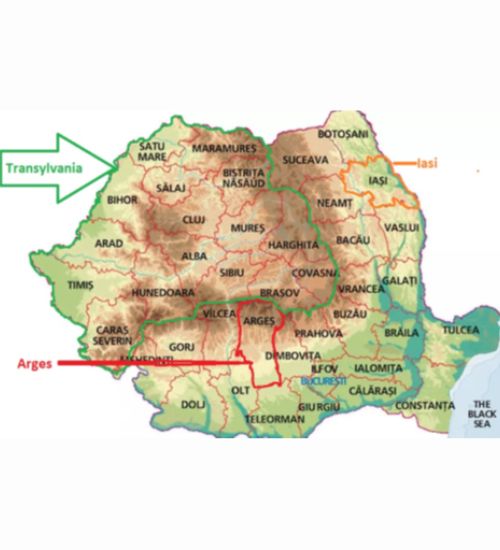In Romania, most farmers are small in size and they have little bargaining power with the multinational giants that supply them with raw materials or with those who take over their agricultural products. As result, most of the value generated by the food supply chain does not go to farmer but rather to big companies.

Three rural platforms in Romania
In the framework of the SHERPA project, three multi-actor platforms were established in three historical provinces of Romania, namely the province of Transylvania; Argeș county representing Muntenia province; and Iași county representing Moldavian province. These multi-actor platforms (MAPs) gathered rural actors from science, policy and society, to discuss and create new knowledge for the future of rural areas in Romania.
Agriculture at the core of Romanian discussions
Rural prosperity is one of four areas of action proposed by European Commission through Long-term vision for rural areas towards 2040. In 2022, the Romanian MAPs decided to focus their discussion in this direction. In particular, they tried to answer to the question “How to retain a fair share of the value generated by agriculture in rural areas?”
The interactions within the MAPs revealed that Romanian stakeholders have a holistic perception on the meaning of the sustainability of agri-food value chains. They envision agri-food value chains that:
- Have a fair focus on economic aspects: sharing of value among actors along the food chain;
- Relate social sustainability more to consumers: their preferences, awareness, trust of consumers regarding local producers;
- Better integrate the environmental impact of agri-food chains: so far, this aspect is marginally approached mostly by NGOs acting on environmental aspects and by producers having organic products on their portfolio. To some extents, environmental sustainability is indirectly considered by farmers through climate change mitigation’ actions generally supported by subsidies.
Overall, the three Romanian MAPs identified the main knowledge gaps and needs for supporting the sustainable integration of local producers on agri-food value chains. It emerged that both gaps and needs are diferent, and depends on the experience and peculiarities of each territory.
Knowledge gaps and needs in Transylvania
Transylvania is an area with a greater spread of civic initiatives and direct cooperation between local producers and consumers. In this province, knowledge gaps refer to:
- How to do an effective advertising campaigns for building trust and increase awareness related to local agri-food products (both to final consumers and to local producers);
- Developing (local) Agricultural Knowledge and Innovation Systems adressing the real and curent needs of small farmers;
- “Translation” of the rules and regulations into simpler and more accessible language.
Knowledge gaps and needs in Iași
For Iași county, area with incipient development of short food suply chains, local knoledge gaps and needs relate to:
- Lacking solutions for digitalisation of agri-food value chain’ exchange and processes;
- Adapting educational curricula and skills development to local business needs;
- Developing efficient mechanisms for sharing the good practices in supporting and evolving short agri-food chains (including cooperation).
Knowledge gaps and needs in Arges
The Arges county has the greatest fragmentation of primary production due to the dominance of small farms that work about 1half of the agricultural land of the county and the poor cooperation between these farms. Thefore, local needs and knowledge gaps refer to:
- Sharing good practices in supporting cooperation among agri-food chain’ actors;
- Increasing farmers’ adaptability through information/advisory services on changing consumer preferences, innovative technical and technological solutions that respond to climate changes, green energy etc.;
- Finding alternative financial mechanisms and instruments, more accessible for small farmers and rural businesses, in particular, by simplifying the rules and reducing co-financing quotas.
For more information regarding Romanian’ stakeholders point of views on sustainability of agri-food value chains please visit recently published Position Papers of Transylvania, Iasi, Arges.
